What is Cotton Fiber? Cotton fiber is a soft, fluffy vegetable staple fiber that grows in a ball, around the seeds of the cotton plants of the genus Gossypium. It is one of the most widely used natural fibers in the world due to its versatility, comfort, and durability.
Table of Contents
End Uses of Cotton:
- Apparel: Shirt, suits, jackets, sweaters, skirts, pants, socks.
- Home Fashion: Sheets, Towels, Table, mats, Table cloths.
Types of Cotton Fiber:
Cotton has been cultivated and used by humans for thousands of years. With evidence of its domestication dating back to ancient times in various regions such as the Indian subcontinent, Egypt, and the Americas.
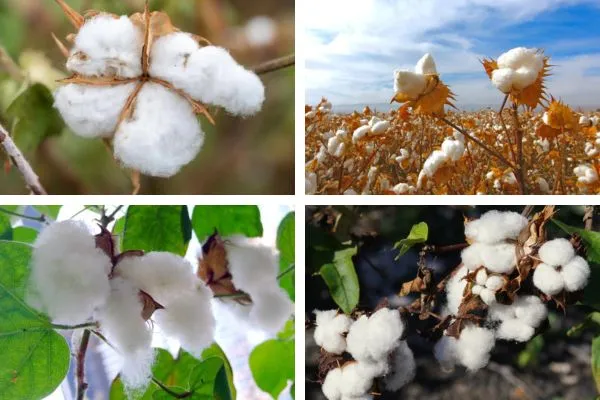
i) Gossypium hirsutum: Upland cotton, native to Central America and Mexico.
ii) Gossypium barbadense: Pima cotton, native to tropical South America.
iii) Gossypium arboreum: Tree cotton, native to India and Pakistan.
iv) Gossypium herbaceum: Levant cotton, native to the Arabian peninsula and Southern Africa.
You may like: Classification of Cotton Fiber
Cotton Producing Countries:
- China
- India
- USA
- Pakistan
- Brazil
- Uzbekistan
- Australia
- Turkey
- Turkmenistan
- Greece
Cotton Production Process:
- Land preparation
- Seed sowing
- Thinning
- Weed & chemical control
- Fertilization
- Pest control
- Cotton plant growth and development
Bale: Bale is the compressed form of fibers. It has 2 types: i) Modified flat. ii) Universal density
Cultivation of Cotton:
- Seed planted
- 2 weeks later, two leaves appear
- 5-6 weeks later, the first flower appears
- 8- 9 weeks later, the first slower blooms
- Flowers fall off leaving boll
- Seed hairs start to grow inside the bolls
- For 16- 18 days, fiber length and perimeter achieved
- For the next 22 – 50 days, cellulose accumulates inside the fibers
- When cellulose deposition stops, the bolls dry and crack to open
- These bolls are picked up manually or by machine. This picking duration is continuing for 1 – 3 months
- Then ginning is done to collect the cotton fibers from the seeds
Picking:
The process of collecting cotton bolls from cotton plants is called picking.
It has 2 types:
i) Hand picking
ii) Mechanical picking
Neps: Neps is the entanglement of fibers.
Fibril: Fibril is a bundle of linear polymer which forms a small fibrous structure.
Ginning:
Definition: The process of separating cotton fibers from cotton seeds is called ginning.
After harvesting, the cotton bolls undergo a process called ginning to separate the cotton fibers from the seeds and other plant material. This process involves passing the cotton through a series of rotating saws and brushes to remove the seeds and debris.
The invention of the cotton gin by Eli Whitney in the late 18th century revolutionized cotton production, leading to its widespread use in the textile industry.
Objects:
- To separate fibers fully from their seeds
- To collect seeds and waste together
Types:
- Ginning
- Saw ginning
- Roller ginning
- Single roller ginning, McCarthy Ginning
- Double Roller Ginning
- Rotary Knife Ginning (Rotobar)
Lint: Ginned cotton is known as lint.
Linters: After ginning there are still some short fibers adhering with seeds. These again ginned thus short fibers are known as liners.
Trash: The impurities present in lint cotton after the separation of seeds are called trash.
Saw Ginning Process:
Spiked roller
Seed cotton
Pressure roller
Lint cotton
Hopper
Grid bar
Collection box
Saw roller
Brush roller
Perforated cage
Fan
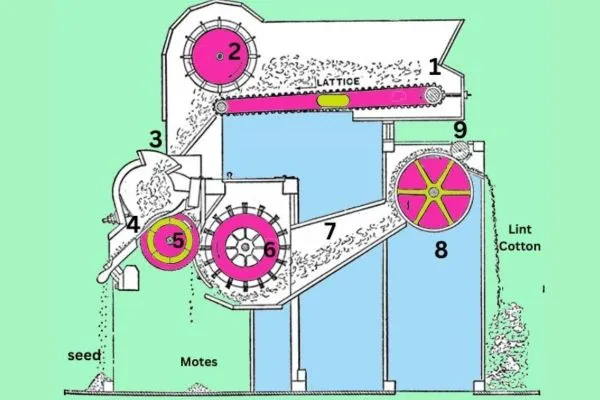
i) Seed cotton is fed into the feeder hopper and carried by a feed lattice to a spiked roller. The spiked roller throws the seed cotton to the hopper.
ii) While seed cotton is in the hopper, the seed is separated from the cotton and falls through the grid bar into a collection box. The remaining lint cotton is attached to the teeth of the saw roller.
iii) Brush roller strips the lint cotton from the saw roller.
iv) Then it is drawn through a lint flue to the perforated cage by a fan.
v) Lint cotton then passes between the perforated cage and pressure roller out of the machine. 22/128 pdf
Single roller ginning or McCarthy ginning process:
Lint
Ginning roller
Roller covering
Stationary knife
Seed cotton
Hopper
Reciprocating knife
Seed
Crank
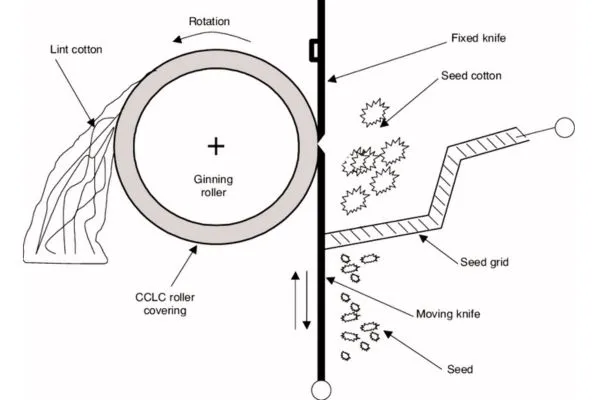
i) The cotton is fed into the hopper and the fibers are drawn by a leather-covered roller over the edge of a stationary knife (Doctor & fixed knife)
ii) Crank move the reciprocating knife up and down immediately behind & parallel to the fixed knife.
iii) The doctor and reciprocating knife strike off the seed cotton and only permit the lint cotton to go forward with the leather-covered roller.
Difference between saw ginning and Roller ginning:
Roller ginning:
| Saw ginning | Roller ginning |
| iii) Used for all staple-length cotton. | ii) The main functional parts are roller & knife. |
| iii) Used for short & medium staple-length cotton. | iii) Used for all staple-length cotton. |
| i) Lint is separated from seeds with the help of a roller and knife. | viii) More liters of seed. |
| iv) Complex process. | iv) Simple process |
| v) Faster process. | v) Slower process. |
| vi) Maintenance cost is higher. | vi) Maintenance cost is lower. |
| vii) Energy cost is lower. | vii) Energy cost is higher. |
| viii) More liters on seed. | viii) Less linter on seed. |
| ix) More fiber damage. | ix) Less fiber damage. |
| x) Fiber becomes more nappy. | x) Fibre becomes less nappy. |
Spinning and Weaving
Once the cotton fibers have been separated and cleaned, they are spun into yarn and woven into fabric using various techniques and machinery. The cotton fabric can be used to make a wide range of products, from clothing and bedding to textile materials and medical supplies.
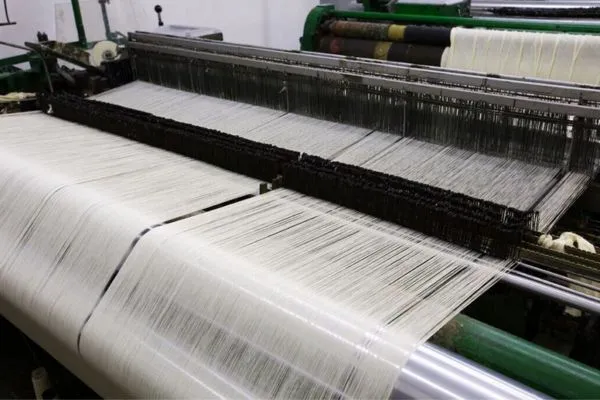
Properties of Cotton Fiber
Natural Characteristics
Cotton fibers are composed primarily of cellulose. It has a carbohydrate polymer that provides strength and stability to the fiber. This natural composition gives cotton its softness and breathability, making it ideal for clothing and textile products.
Strength and Durability
Despite its soft and delicate feel, cotton fibers are remarkably strong and durable. They can withstand repeated washing and wear, making cotton garments long-lasting and resistant to tearing or fraying.
Absorbency
Cotton is highly absorbent. It can hold a significant amount of moisture. Which makes it comfortable to wear in hot and humid climates. This absorbent quality also makes cotton an excellent choice for towels, bed linens, and other household textiles.
Breathability
One of the most notable properties of cotton is its breathability. Cotton fibers permit air to circulate freely by the fabric. It helps to increase comfort properties in fabric regulate body temperature and keep the wearer cool and comfortable in warm weather.
Applications of Cotton
Textile Industry
Cotton is the most widely used natural fiber in the textile industry. It has applications ranging from clothing and apparel to home furnishings and industrial fabrics. Its versatility, durability, and comfort make it an ideal choice for a wide range of textile products.

Non-Textile Uses
In addition to its use in textiles, cotton is also used in various non-textile applications, including paper production, medical supplies, and food products. Cottonseed oil, extracted from cotton seeds, is used in cooking, cosmetics, and animal feed.
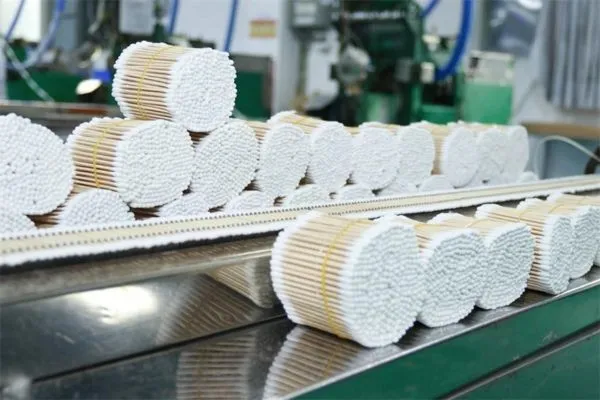
Environmental Impact
Sustainability Issues
Conventional cotton farming practices have significant environmental impacts, including water pollution, soil degradation, and habitat loss. The use of pesticides and synthetic fertilizers in conventional cotton production also raises concerns about human health and ecosystem biodiversity.
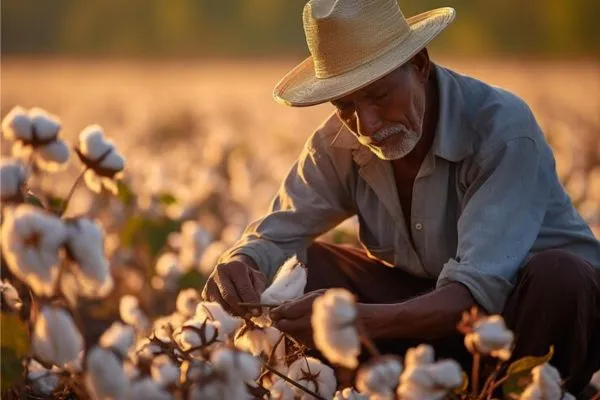
Organic Cotton
To address these environmental concerns, many farmers and manufacturers are turning to organic cotton farming practices. Where prohibits the use of synthetic chemicals and promotes soil health and biodiversity. Organic cotton is grown using natural methods such as crop rotation, composting, and biological pest control. This makes it a more sustainable alternative to conventional cotton.
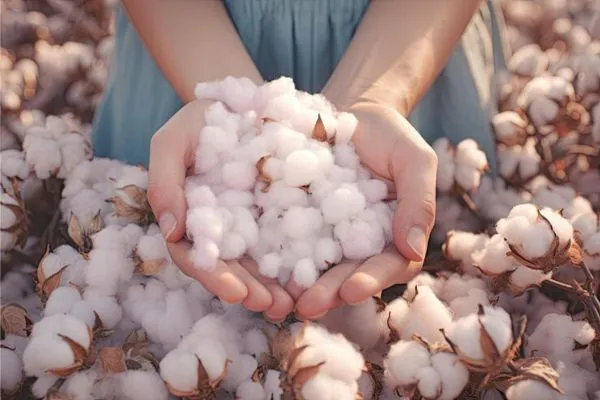
Future of Cotton Fiber
Technological Advancements
Advancements in technology, such as genetically modified (GM) cotton varieties and precision agriculture techniques. It helps to improve the efficiency and sustainability of cotton production. GM cotton varieties are engineered to resist pests and diseases. It reduces the need for chemical pesticides and increases crop yields.
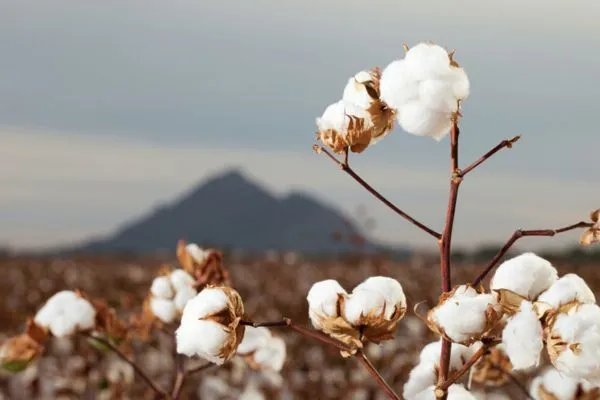
Sustainability Initiatives
Many textile industry leaders, including farmers, and manufacturers, are working together to promote sustainable cotton production and consumption. Initiatives such as the Better Cotton Initiative (BCI) and the Organic Cotton Accelerator (OCA) are helping to drive positive change across the cotton supply chain, from farm to fashion.
Conclusion
Cotton fiber is a versatile and sustainable natural resource. It has been utilized by humans for thousands of years. Its special properties make it perfect for a wide range of applications. From clothing and textiles to industrial and medical uses.
However, the environmental impact of conventional cotton production underscores the importance of adopting more sustainable farming practices. We need to support initiatives that promote ethical and responsible cotton cultivation.
